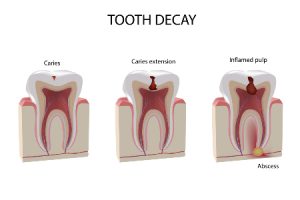 What Is Pulp Capping?
What Is Pulp Capping?
When a tooth is damaged by decay or trauma, but the pulp isn’t yet infected, there’s a chance it can be saved without a full root canal. This is where pulp capping comes in—a lesser-known but valuable procedure used to protect the pulp and encourage natural healing. The technique is used to treat a tooth with deep decay that’s approaching the pulp chamber. Rather than removing the pulp, we place a protective dressing over the exposed or nearly exposed pulp in an effort to avoid infection and inflammation. The goal is to stimulate dentin formation and maintain the health of the pulp tissue, potentially preventing the need for a root canal.
Types of Pulp Capping
There are two main approaches: indirect and direct. Indirect pulp capping is performed when the decay is very close to the pulp but has not yet exposed it. We remove the softened dentin and then place a medicated material over the remaining tissue to encourage healing. The direct method, on the other hand, is used when the pulp has been exposed—either by decay or trauma—but is still healthy enough to be preserved. Both methods are conservative alternatives to more invasive treatments.
When Is It Appropriate?
We typically recommend the procedure for younger patients or teeth with strong healing potential. The ideal candidate has minimal to no symptoms, no signs of irreversible pulpitis, and a healthy response to pulp vitality tests. It’s also important to seal the tooth properly afterward to prevent bacterial contamination.
Why Pulp Capping Matters
The procedure represents the foundational goal of endodontics: saving natural teeth and preserving pulp vitality whenever possible. In select cases, we may recommend pulp capping to ensure the best outcome. This forward-thinking, minimally invasive procedure aligns with modern dentistry’s shift toward preservation. Though not suitable for every situation, it can successfully extend the life of a tooth. It may delay or even eliminate the need for root canal therapy. If you’re experiencing a cavity or have suffered dental trauma, contact our office for an appointment. We’ll assess whether pulp capping could be the right choice for you!





Comments are closed.